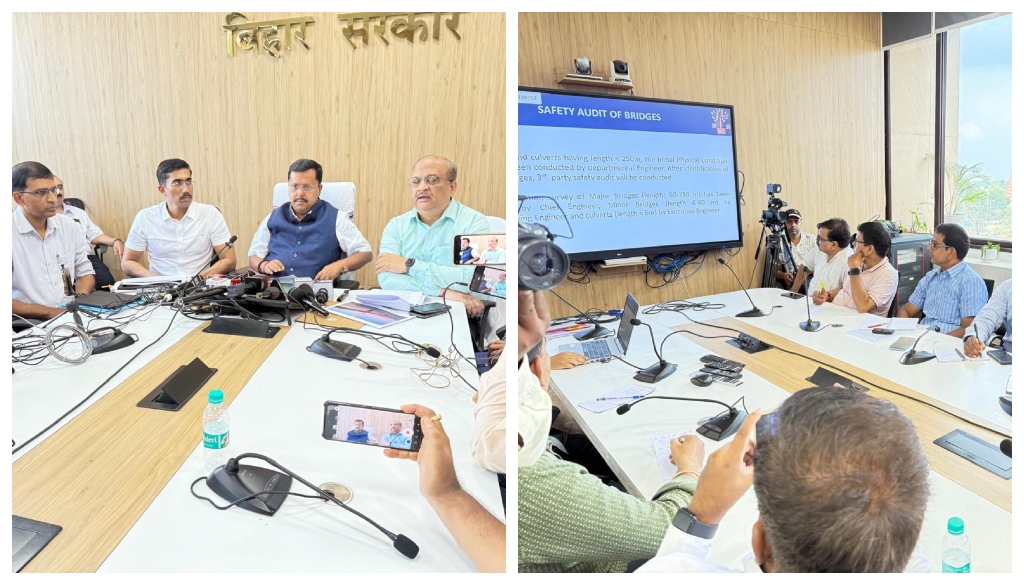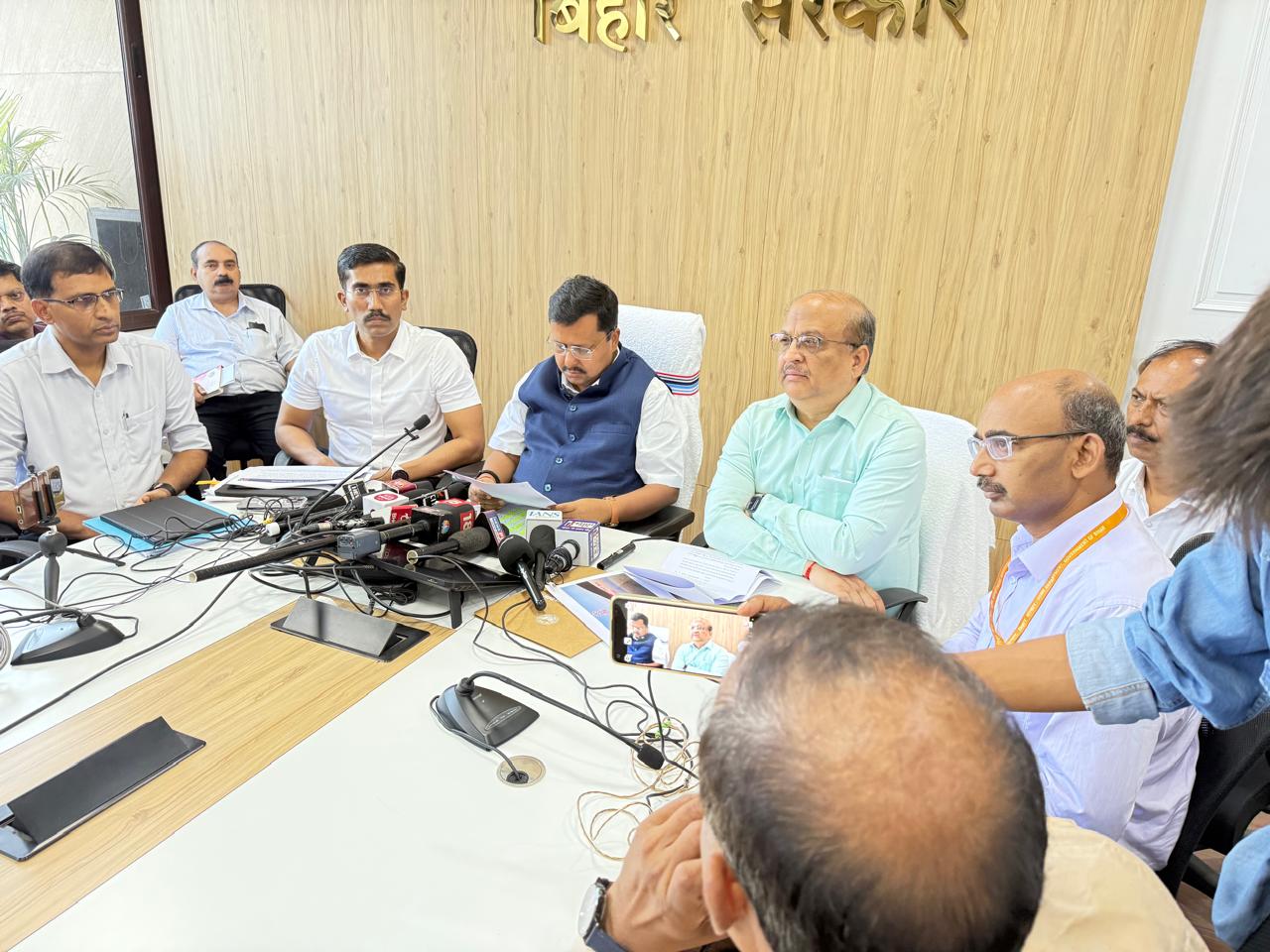Bihar to Use Drones, Sensors for Real-Time Bridge Health Checks Under New Maintenance Policy

Patna: Road Construction Minister Nitin Nabin on Saturday held a detailed briefing on the country’s first comprehensive bridge maintenance policy, aimed at ensuring the long-term safety and structural integrity of Bihar’s vast network of bridges. Addressing a press conference at the department’s headquarters, Nabin emphasised that the newly adopted Bihar State Bridge Management and Maintenance Policy 2025 will set a national benchmark in infrastructure upkeep.
Joined by Additional Chief Secretary Mihir Kumar Singh and Special Secretary Shirshit Kapil Ashok, Nabin highlighted the exponential growth of road and bridge infrastructure across the state. “It is now possible to travel from any part of Bihar to Patna within five hours. This seamless connectivity is the result of sustained development over the last two decades,” he said.
The policy, approved by the Council of Ministers on June 3, 2025, was first conceptualised in the 2022–23 budget and aligns with the state’s Vision 2020 roadmap. “Bihar is proud to be the first Indian state to give a structured and actionable shape to such a critical maintenance framework,” said Nabin.
Comprehensive Maintenance Framework

According to Nabin, 3,968 bridges have been constructed under the Road Construction Department over the last 18 years, including 532 major and mega bridges. With this rapid expansion, the risk of accidents due to ageing structures has increased. The new policy seeks to proactively manage these risks through systematic inspection and timely intervention.
Maintenance will now be based on detailed technical analysis. Bridges will be assessed using visual inspections, non-destructive tests, drone cameras, and sensors. Each structure will be assigned a Bridge Health Index (BHI) and Maintenance Priority Index (MPI) to determine its health status and repair urgency. A “health card” will then be prepared for each bridge.
The state’s bridges will be maintained through a seven-part strategy that includes initial rectification, regular and periodic maintenance, minor improvements, special and exceptional repairs, and unforeseeable interventions.
Bridges longer than 60 metres will fall under the purview of the Bihar Rajya Pul Nirman Nigam Limited, while smaller bridges will be managed by respective road divisions.
IITs to Conduct Safety Audits

In a key move, IIT Delhi and IIT Patna have been appointed to carry out third-party safety audits for bridges longer than 250 metres. Each institute will oversee 40 bridges in their respective zones. A Letter of Acceptance (LOA) has already been issued for the audit of 45 bridges in South Bihar, and a consultancy fee of Rs 16.61 crore has been allocated.
“These premier institutions will also prepare repair estimates based on their audits, following which rehabilitation work will be undertaken,” Nabin said.
For bridges shorter than 250 metres, departmental engineers have been trained to conduct Physical Condition Surveys. Executive Engineers will handle culverts up to 6 metres, Superintending Engineers for 6–60 metres, and Chief Engineers for 60–250 metres. So far, 600 engineers have received training for this work.
The government is also exploring real-time structural health monitoring for key structures such as the Ara–Chhapra and Arwal–Sahar bridges using sensor technology. A digital safety audit has already been conducted for the Bairiyahi Ghat bridge in Samastipur district.
Nabin reiterated the state’s commitment to public safety and uninterrupted transport. “With this policy, Bihar is not only protecting its infrastructure but also setting a model for the rest of India,” he said.





